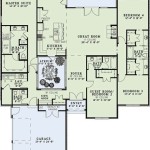Goat House Plans are detailed blueprints or guidelines that provide the necessary instructions and measurements for constructing or modifying a structure specifically designed to house goats. These plans include comprehensive information on the dimensions, materials, and construction techniques required to create a safe, comfortable, and functional goat house.
A well-planned goat house is essential for the well-being and productivity of goats. It provides protection from the elements, predators, and diseases, while also ensuring adequate ventilation, space, and feeding areas. Proper goat house planning can help optimize goat health, productivity, and overall management practices.
In this article, we will delve into the key elements and considerations involved in goat house planning. We will explore different types of goat house designs, materials, ventilation systems, and essential features to ensure the comfort, safety, and productivity of your goats.
When creating goat house plans, it is important to consider the following key points:
- Dimensions and space requirements
- Ventilation and air quality
- Natural lighting
- Predator protection
- Waste management
- Feeding and watering systems
- Ease of cleaning and maintenance
- Materials and durability
- Cost and budget
- Local building codes and regulations
By carefully considering these factors, you can design and build a goat house that meets the specific needs of your goats and provides them with a comfortable, healthy, and productive environment.
Dimensions and space requirements
Determining the appropriate dimensions and space requirements for your goat house is crucial for ensuring the comfort, health, and productivity of your goats. Several factors need to be considered when calculating the necessary space, including the number of goats, their size, and the type of goat house system you plan to use.
- Floor space: As a general rule, you should provide at least 20 square feet of floor space per adult goat. This space includes areas for feeding, resting, and exercise. For kidding goats, you should provide an additional 10-15 square feet per doe.
- Height: The height of the goat house should be sufficient to allow goats to stand up and move around comfortably. A minimum height of 6-7 feet is recommended.
- Ventilation: Proper ventilation is essential for maintaining good air quality and preventing respiratory problems in goats. Ensure that your goat house has adequate ventilation openings to allow for fresh air circulation.
- Natural lighting: Natural lighting is beneficial for goats’ health and well-being. Incorporate windows or skylights into the design of your goat house to provide natural light.
In addition to these general guidelines, you may need to adjust the dimensions and space requirements based on specific factors such as the breed of goats you are raising, the climate in your area, and your management practices. It is always advisable to consult with experienced goat breeders or agricultural professionals to determine the optimal dimensions and space requirements for your particular situation.
Ventilation and air quality
Proper ventilation is essential for maintaining good air quality in goat houses and preventing respiratory problems in goats. Poor ventilation can lead to a buildup of harmful gases, such as ammonia and carbon dioxide, which can cause respiratory distress, reduced feed intake, and decreased milk production in goats.
- Provide adequate ventilation openings: Ensure that your goat house has sufficient ventilation openings to allow for fresh air circulation. These openings should be evenly distributed throughout the goat house and should be adjustable to control the amount of ventilation. The total ventilation area should be at least 1 square foot per 100 cubic feet of space.
- Use fans or exhaust systems: In addition to natural ventilation, you may need to use fans or exhaust systems to increase air circulation, especially during hot or humid weather. Fans should be placed to create a cross-breeze and should be sized appropriately for the size of the goat house.
- Remove manure and wet bedding regularly: Manure and wet bedding can release harmful gases into the air. Regularly removing these materials from the goat house will help to improve air quality.
- Monitor air quality: Regularly monitor air quality in your goat house using a gas detector or air quality monitor. This will help you to identify any potential problems and take corrective action.
Maintaining good air quality in goat houses is essential for the health and well-being of your goats. By following these tips, you can create a healthy and productive environment for your goats.
Natural lighting
Natural lighting is essential for the health and well-being of goats. It helps to regulate their circadian rhythm, which is important for sleep, feeding, and breeding. Natural light also helps to prevent vitamin D deficiency, which can lead to a variety of health problems in goats, including bone deformities, muscle weakness, and reproductive problems.
When designing your goat house, it is important to incorporate windows or skylights to provide natural light. The windows or skylights should be placed on the south side of the goat house in the Northern Hemisphere (or the north side in the Southern Hemisphere) to maximize sunlight exposure. The windows or skylights should also be large enough to provide adequate lighting for the entire goat house.
In addition to providing natural light, windows and skylights can also help to ventilate the goat house. By opening the windows or skylights on opposite sides of the goat house, you can create a cross-breeze that will help to circulate fresh air and remove harmful gases.
If you are unable to provide natural light in your goat house, you can use artificial lighting to supplement the natural light. However, artificial lighting should not be used as the sole source of light for goats. Artificial lighting can disrupt their circadian rhythm and lead to health problems.
Predator protection
Protecting your goats from predators is essential for their safety and well-being. Predators can cause serious injury or death to goats, and they can also spread diseases. There are a number of things you can do to protect your goats from predators, including:
- Secure your goat house: Your goat house should be made of sturdy materials and have a secure door that can be locked. There should be no holes or gaps in the walls or roof that predators could use to get inside.
- Install fencing: Surround your goat pasture with a fence that is at least 5 feet tall. The fence should be made of strong materials, such as woven wire or chain link, and it should be buried at least 1 foot underground to prevent predators from digging under it.
- Provide guard animals: Guard animals, such as dogs or donkeys, can help to deter predators from your goats. Guard animals should be trained to stay with the goats and to bark or bray at any strangers who approach.
- Remove attractants: Predators are attracted to food and water, so it is important to keep these items away from your goat pasture. Feed your goats in a designated area, and clean up any spilled feed immediately. Store water in a covered container, and dump out any standing water regularly.
By following these tips, you can help to protect your goats from predators and keep them safe.
Waste management
Proper waste management is essential for maintaining a healthy and productive goat house. Goat manure can contain harmful bacteria and parasites, which can cause health problems in goats if not properly managed. In addition, manure can attract flies and other pests, which can further contribute to health problems in goats.
There are a number of different ways to manage goat manure, including:
- Composting: Composting is the process of breaking down organic matter, such as manure, into a nutrient-rich soil amendment. Composting goat manure is a great way to recycle nutrients and improve soil health. To compost goat manure, simply pile it up in a bin or enclosure and turn it regularly to aerate it. The compost will be ready to use in 2-3 months.
- Manure spreading: Manure spreading is the process of applying manure to fields or pastures as a fertilizer. Manure spreading is a good way to recycle nutrients and improve soil fertility. However, it is important to note that manure should be composted before it is spread on pastures or fields to reduce the risk of spreading parasites and pathogens.
- Lagoon storage: Lagoon storage is the process of storing manure in a lagoon or pond. Lagoon storage is a good option for farms with a large number of goats. However, it is important to note that lagoons can produce methane gas, which is a greenhouse gas. In addition, lagoons can attract flies and other pests.
- Mechanical manure removal: Mechanical manure removal systems use equipment to remove manure from goat houses. Mechanical manure removal systems are a good option for large farms with a large number of goats. However, these systems can be expensive to purchase and operate.
The best waste management system for your goat farm will depend on a number of factors, including the size of your farm, the number of goats you have, and the availability of land and resources.
Regardless of the waste management system you choose, it is important to regularly clean your goat house to remove manure and wet bedding. This will help to prevent the buildup of harmful bacteria and parasites and will help to keep your goats healthy.
Feeding and watering systems
Proper feeding and watering systems are essential for the health and productivity of goats. When designing your goat house, it is important to consider the following factors:
- Type of feeders and waterers: There are a variety of different types of feeders and waterers available for goats. The type of feeder or waterer you choose will depend on the size of your goat herd, the type of feed you are using, and the climate in your area.
- Location of feeders and waterers: Feeders and waterers should be placed in a convenient location for goats to access. They should also be placed away from areas where goats are likely to rest or sleep.
- Capacity of feeders and waterers: The capacity of feeders and waterers should be large enough to provide adequate feed and water for all of the goats in your herd. Feeders and waterers should be checked regularly to ensure that they are full.
- Hygiene: Feeders and waterers should be cleaned regularly to prevent the buildup of bacteria and parasites. Dirty feeders and waterers can lead to health problems in goats.
By following these tips, you can ensure that your goats have access to clean, fresh feed and water at all times.
Ease of cleaning and maintenance
Goat houses should be designed to be easy to clean and maintain. This will help to prevent the buildup of bacteria and parasites, which can lead to health problems in goats. When designing your goat house, consider the following factors:
- Smooth surfaces: The walls, floors, and ceilings of the goat house should be smooth and easy to clean. This will help to prevent the buildup of dirt and debris.
- Adequate drainage: The goat house should have adequate drainage to prevent the buildup of moisture. Moisture can lead to the growth of mold and bacteria, which can cause health problems in goats.
- Removable equipment: Any equipment in the goat house, such as feeders and waterers, should be removable for easy cleaning.
- Adequate ventilation: The goat house should have adequate ventilation to help remove moisture and odors. Good ventilation will help to keep the goat house clean and healthy.
By following these tips, you can design a goat house that is easy to clean and maintain, which will help to keep your goats healthy and productive.
Materials and durability
The materials you choose for your goat house will have a significant impact on its durability and longevity. When selecting materials, consider the following factors:
- Climate: The climate in your area will play a role in the type of materials you choose for your goat house. If you live in a cold climate, you will need to choose materials that are well-insulated. If you live in a warm climate, you may be able to get away with using less insulation.
- Type of goats: The type of goats you raise will also affect the materials you choose for your goat house. If you raise dairy goats, you will need to choose materials that are easy to clean and disinfect. If you raise meat goats, you may be able to get away with using less expensive materials.
- Budget: The cost of materials will also need to be considered when making your decision. Some materials, such as wood, are relatively inexpensive. Other materials, such as metal, are more expensive. You will need to decide how much you are willing to spend on materials before you start building your goat house.
Once you have considered these factors, you can start to narrow down your choices. Some of the most common materials used to build goat houses include:
- Wood: Wood is a popular choice for goat houses because it is relatively inexpensive and easy to work with. However, wood is not as durable as some other materials, and it can rot if it is not properly treated.
- Metal: Metal is a more durable option than wood, but it is also more expensive. Metal goat houses are less likely to rot or be damaged by pests, but they can be hot in the summer and cold in the winter.
- Concrete: Concrete is a very durable material that is often used to build commercial goat houses. However, concrete is also very expensive and difficult to work with. If you are planning to build a concrete goat house, you will need to hire a professional.
The best material for your goat house will depend on your specific needs and budget. By carefully considering the factors discussed above, you can choose the right materials to build a goat house that will last for many years to come.
Cost and budget
The cost of building a goat house will vary depending on a number of factors, including the size of the goat house, the materials used, and the complexity of the design. However, there are a few general tips that can help you save money on your goat house project:
- Plan ahead: The more planning you do upfront, the less likely you are to make costly mistakes later on. Take the time to research different goat house designs and materials, and to get quotes from different contractors.
- Use recycled materials: Recycled materials can be a great way to save money on your goat house project. You can find used building materials at salvage yards and online marketplaces. You can also use natural materials, such as straw bales or logs, to build your goat house.
- Build it yourself: If you are handy, you can save a lot of money by building your own goat house. However, it is important to note that building a goat house is a complex project, and it is important to do your research before you start. You may also want to consider hiring a contractor to help you with the more difficult aspects of the project.
- Shop around: When it comes to purchasing materials for your goat house, it is important to shop around and compare prices. You can often find the same materials for a lower price at different stores. You can also save money by buying materials in bulk.
By following these tips, you can save money on your goat house project without sacrificing quality.
Local building codes and regulations
Before you start building your goat house, it is important to check with your local building department to see if there are any codes or regulations that you need to follow. These codes and regulations may vary from place to place, so it is important to check with your local authorities to find out what the specific requirements are in your area.
In general, building codes and regulations are designed to ensure that buildings are safe and habitable. They may include requirements for the following:
- Foundation: The foundation of your goat house must be strong enough to support the weight of the structure and its contents. The foundation should also be designed to prevent water from seeping into the goat house.
- Framing: The framing of your goat house must be strong enough to support the weight of the roof and walls. The framing should also be designed to resist wind and snow loads.
- Roofing: The roofing of your goat house must be waterproof and durable. The roofing should also be designed to provide adequate ventilation.
- Ventilation: Your goat house must have adequate ventilation to prevent the buildup of moisture and ammonia. Ventilation can be provided by windows, vents, or fans.
- Electrical: If you plan to install electrical wiring in your goat house, you will need to obtain a permit from your local building department. The electrical wiring must be installed according to code to prevent electrical fires.
- Plumbing: If you plan to install plumbing in your goat house, you will need to obtain a permit from your local building department. The plumbing must be installed according to code to prevent water leaks.
By following the building codes and regulations in your area, you can ensure that your goat house is safe and habitable for your goats.
In addition to the building codes and regulations, there may also be other local ordinances that you need to be aware of. For example, some communities have ordinances that restrict the number of animals that you can keep on your property. It is important to check with your local authorities to find out if there are any ordinances that apply to goat keeping in your area.










Related Posts








